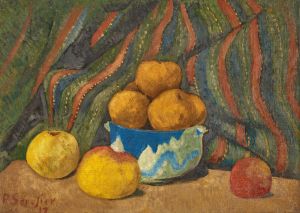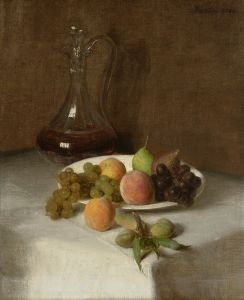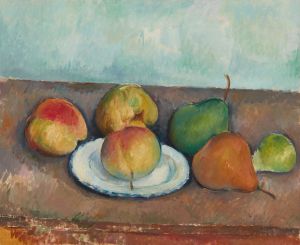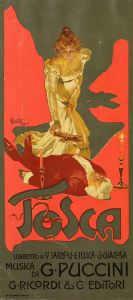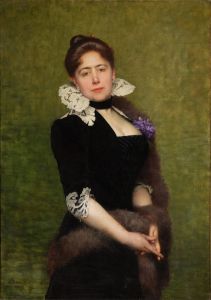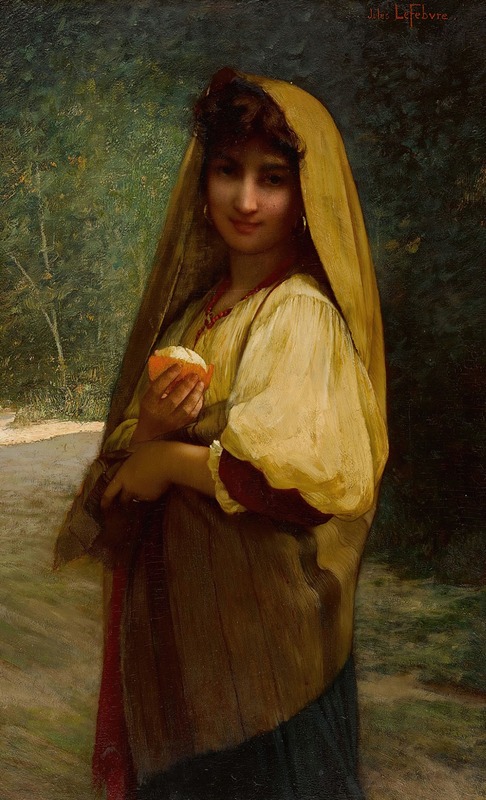
An Italian Girl With An Orange
A hand-painted replica of Jules Joseph Lefebvre’s masterpiece An Italian Girl With An Orange, meticulously crafted by professional artists to capture the true essence of the original. Each piece is created with museum-quality canvas and rare mineral pigments, carefully painted by experienced artists with delicate brushstrokes and rich, layered colors to perfectly recreate the texture of the original artwork. Unlike machine-printed reproductions, this hand-painted version brings the painting to life, infused with the artist’s emotions and skill in every stroke. Whether for personal collection or home decoration, it instantly elevates the artistic atmosphere of any space.
Jules Joseph Lefebvre was a renowned French painter, born on March 14, 1836, in Tournan-en-Brie, France. He was a pivotal figure in the academic art movement of the 19th century and was known for his meticulous technique and his ability to capture the human form with grace and precision. Lefebvre's works often focused on portraiture and the female form, and he was celebrated for his skill in rendering textures and details.
One of Lefebvre's notable works is "An Italian Girl With An Orange." This painting exemplifies his talent in portraiture and his interest in capturing the essence of his subjects. The painting depicts a young Italian girl holding an orange, a simple yet evocative composition that highlights Lefebvre's ability to convey emotion and character through his art.
"An Italian Girl With An Orange" is characterized by its attention to detail and the lifelike quality of the subject. The girl's expression is serene and contemplative, and Lefebvre's use of light and shadow adds depth to her features. The orange she holds is a vibrant focal point in the painting, contrasting with the more subdued tones of her clothing and the background. This use of color not only draws the viewer's eye but also adds a layer of symbolism, as oranges were often associated with themes of innocence and purity in art.
Lefebvre's technique in this painting is indicative of his academic training. He studied at the École des Beaux-Arts in Paris under the tutelage of Léon Cogniet, a prominent French history painter. Lefebvre's education and his dedication to the principles of academic art are evident in the precision and clarity of his work. His ability to render the textures of skin, fabric, and fruit with such realism is a testament to his skill and his commitment to his craft.
Throughout his career, Lefebvre received numerous accolades for his work. He won the prestigious Prix de Rome in 1861, which allowed him to study in Italy and further refine his technique. His time in Italy likely influenced his choice of subject matter in "An Italian Girl With An Orange," as he would have been exposed to the rich artistic traditions and vibrant culture of the region.
Lefebvre was also a respected teacher, and he influenced a generation of artists through his role as a professor at the Académie Julian in Paris. His emphasis on technical skill and his appreciation for the beauty of the human form were imparted to many students who went on to have successful careers in art.
"An Italian Girl With An Orange" remains a testament to Lefebvre's mastery of portraiture and his ability to capture the subtle nuances of his subjects. The painting is a fine example of 19th-century academic art and reflects the cultural and artistic values of the time. While specific details about the painting's provenance and current location may not be widely documented, its significance lies in its representation of Lefebvre's artistic vision and his contribution to the world of art.





